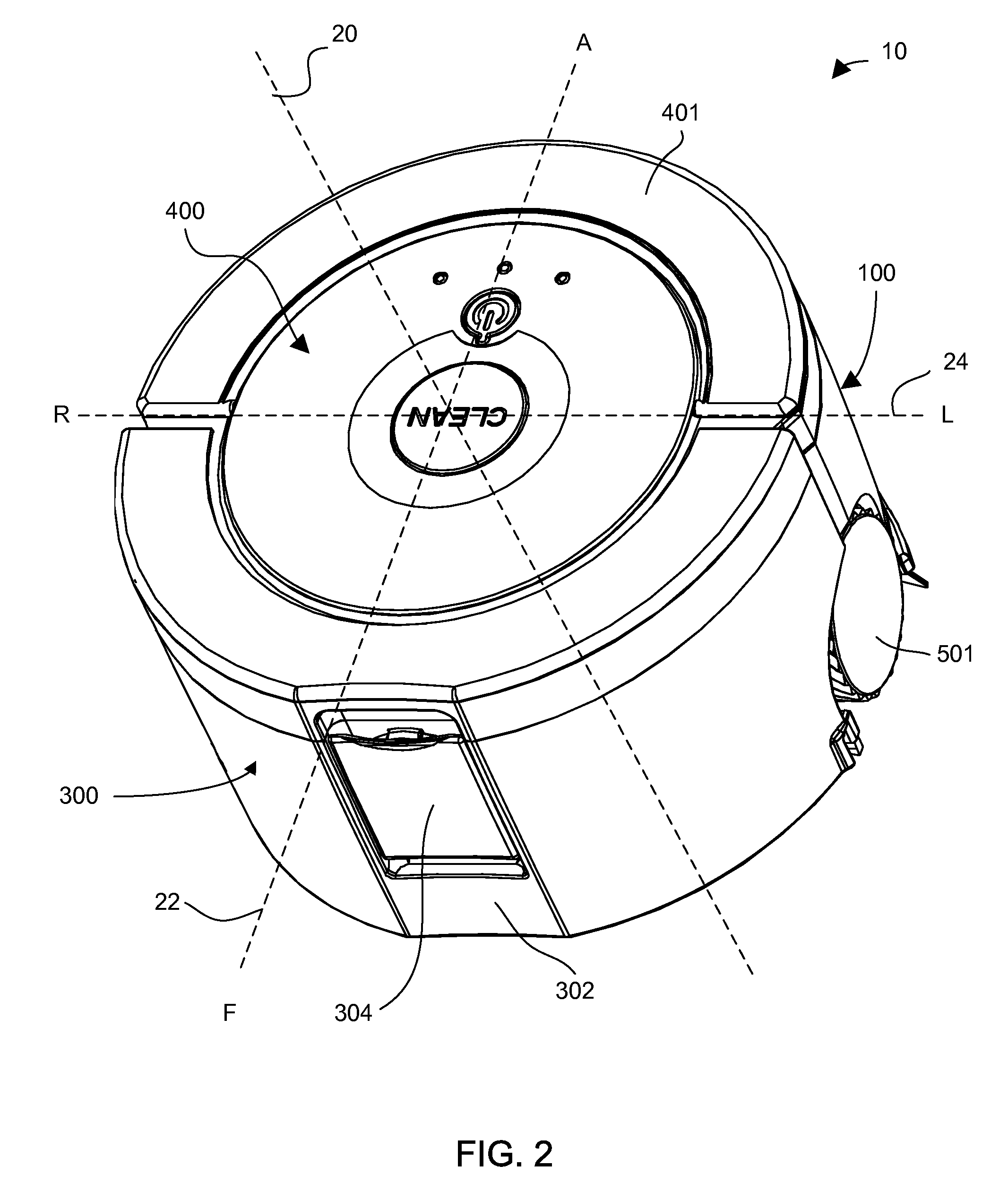Autonomous coverage robot sensing
a robot and autonomous technology, applied in the field of surface cleaning robots, can solve the problems of affecting the cleaning effect, so as to achieve convenient cleaning, facilitate cleaning, and reduce the effect of cleaning fluid contamination
- Summary
- Abstract
- Description
- Claims
- Application Information
AI Technical Summary
Benefits of technology
Problems solved by technology
Method used
Image
Examples
Embodiment Construction
[0071]An autonomous robot may be designed to clean flooring. For example, the autonomous robot may vacuum carpeted or hard-surfaces and wash floors via liquid-assisted washing and / or wiping and / or electrostatic wiping of tile, vinyl or other such surfaces. U.S. application Ser. No. 11 / 359,961 by Ziegler et al. entitled AUTONOMOUS SURFACE CLEANING ROBOT FOR WET AND DRY CLEANING, the disclosure of which is herein incorporated by reference in its entirety, discloses an autonomous cleaning robot.
[0072]An autonomous robot is movably supported on a surface and is used to clean the surface while traversing the surface. The robot can wet clean the surface by applying a cleaning liquid to the surface, spreading (e.g., smearing, scrubbing) the cleaning liquid on the surface, and collecting the waste (e.g., substantially all of the cleaning liquid and debris mixed therein) from the surface. As compared to comparable-sized autonomous dry cleaning robots, an autonomous wet cleaning robot can rem...
PUM
 Login to View More
Login to View More Abstract
Description
Claims
Application Information
 Login to View More
Login to View More - R&D
- Intellectual Property
- Life Sciences
- Materials
- Tech Scout
- Unparalleled Data Quality
- Higher Quality Content
- 60% Fewer Hallucinations
Browse by: Latest US Patents, China's latest patents, Technical Efficacy Thesaurus, Application Domain, Technology Topic, Popular Technical Reports.
© 2025 PatSnap. All rights reserved.Legal|Privacy policy|Modern Slavery Act Transparency Statement|Sitemap|About US| Contact US: help@patsnap.com



